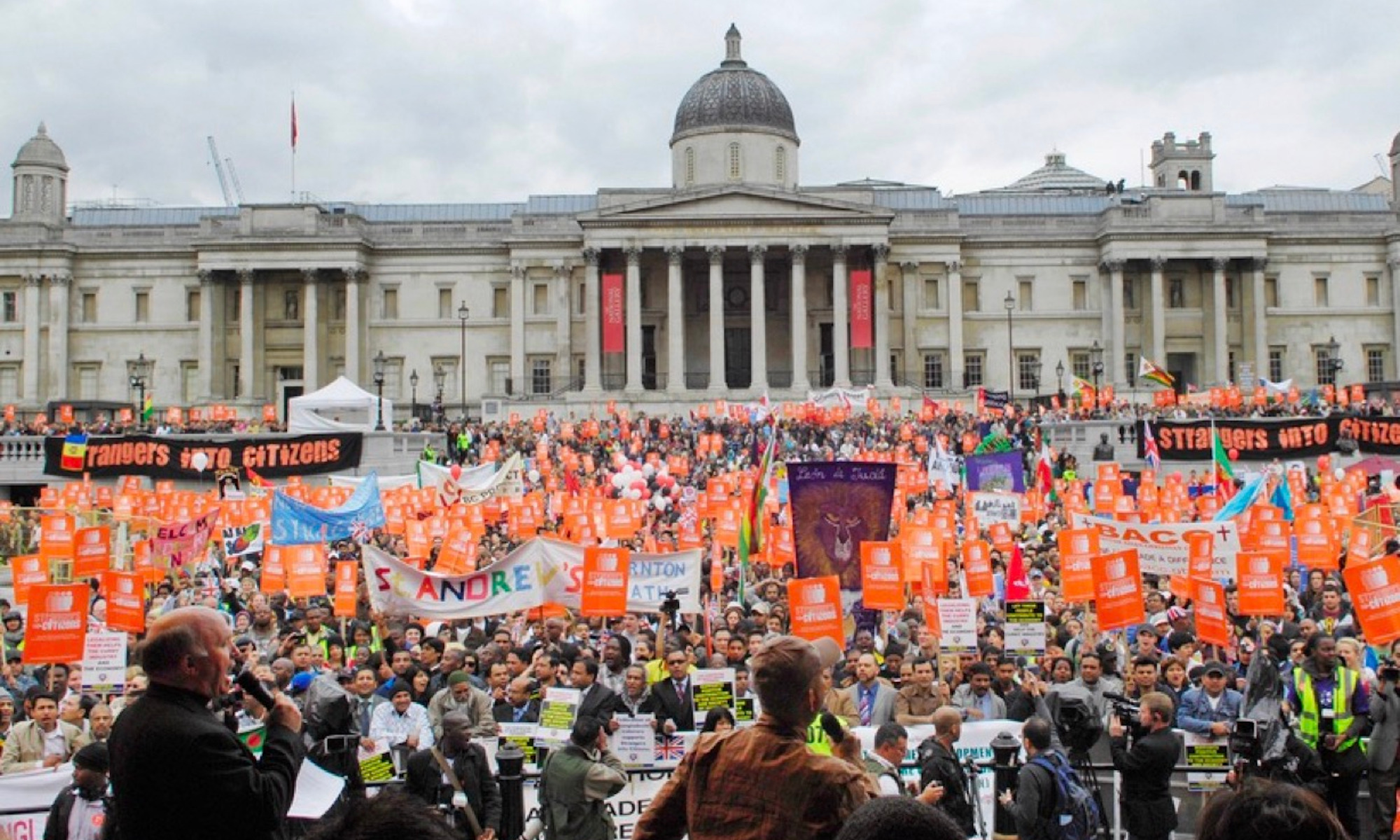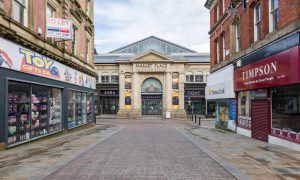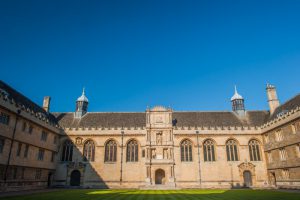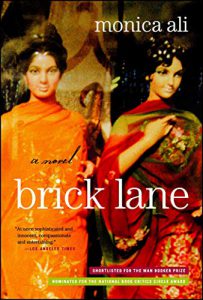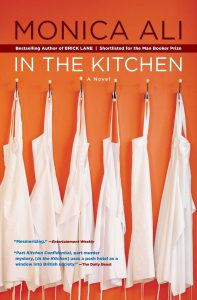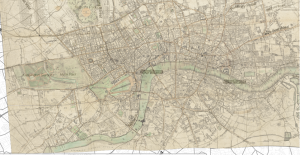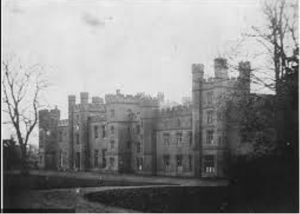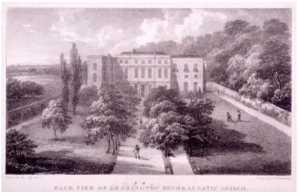Monica Ali’s portrayal of London and Nazneen’s experience as an immigrant is, to a great degree, inflected by a comparison to which Ali repeatedly returns – Hasina’s experience in her homeland of Bangladesh. The epistolary form of Hasina’s narrative – and its role in Nazneen’s life – is an issue that often perplexes readers and critics alike, especially given the seemed stereotypes that litter Hasina’s narrative. What critics tend to overlook, however, are the subtle ways in which Ali subverts or complicates both Nazneen and Hasina’s characterisations. In this paper, I will argue how it is fruitless to interpret the inclusion of Hasina’s life in Dhaka as a foil intended to project certain messages about the ability of London to enrich an immigrant’s life through providing them with the tools to emancipate themselves. Rather, Ali seeks to create a more nuanced portrayal of how London uniquely shapes the life of a few immigrants and how in doing so, she evades totalisations of the immigrant experience in London. I argue that the lengths Ali goes to in order to establish the distinctness and individualisation of Nazneen’s experience, combined her depiction of fringe characters, such as Chanu and Razia, as they interact with London and British culture absolves Ali from the “burden of representation”.
Nazneen’s experience of London as an immigrant is explicitly and implicitly represented in a comparative manner, with Hasina’s experiences in Bangladesh acting as a sort of proxy for what Nazneen’s life could have been like. Many critics have identified the portrayal of Hasina as a stereotype, with her continual suffering and misadventures cementing her status as a symbol of subjugation. Pankaj Mishra of the New York Review of Books even likens Hasina’s letters to that of a tourist, stating ‘at times, Hasina sounds more like a travel writer from England than an oppressed woman from Bangladesh, especially when she reports on the rickshaws in Dhaka painted with the face of Britney Spears’. Attempts to reconcile such depictions have led to a variety of different inferences as to Ali’s attempted meaning behind Hasina’s letters. Jane Hiddleston in her essay “Shapes and Shadows: (Un)veiling the Immigrant in Monica Ali’s Brick Lane” explores how the stereotypical representation of Hasina draws attention to the way in which myths circulate around both the culture of London and that of Dhaka. For Hiddleston, Hasina’s letters are ‘testimony to the pervasiveness of such stereotypes in Bangladesh as well as in Britain, and their inclusion in a novel…forces us to consider the difficulty of attempting to free any representation of cultural identity from their influence’ (63). Hiddleston’s analysis of the purpose served by Hasina’s epistolary presence within the novel illustrates the tendency to view Hasina’s experience relatively to Nazneen’s London life. For Hiddleston, it is the inclusion of Hasina that allows Ali to shed light on the mythic immigrant narrative that revolves around London.
Michael Perfect in his essay “The Multicultural Bildungsroman: Stereotypes in Monica Ali’s Brick Lane” further scrutinizes the dialogue of controversy surrounding Hasina’s portrayal and how it inflects Ali’s portrayal of London and the immigrant experience. He expresses how many critics have sought to ‘emphasise [the use of stereotype’s] sense of knowing irony in doing so’ (110). Perfect rejects this interpretation of stereotypes within the novel, arguing instead that the presentation of Hasina’s life in Bangladesh as a contrapositive to Nazneen’s experience as an immigrant in London serves to celebrate integration. He argues that stereotypes are employed as ‘aesthetic counterpoints in order to further emphasise the protagonist’s final integration into contemporary British society’ (110). Perfect works to undermine the assumption that Ali ironically utilises stereotypes in the text. He identifies Naila Kabeer’s book The Power to Choose as a source of inspiration for Ali. In fact, many of Hasina’s anecdotes and experiences seem to have been directly pulled from testimonies of female Bangladeshi garment workers expressed in Kabeer’s book. Perfect notes that Ali appropriates these testimonies, picking ‘the most despairing ones that Kabeer’s study has to offer’ and that she ‘occasionally modifies them to make them even bleaker’ (118). In this way, Perfect argues that Ali alters the fundamental message of Kabeer’s book, which is to demonstrate that ‘it is the women in Dhaka rather than London who are experiencing an increase in personal agency; indeed, in their “power to choose”’ (118). Perfect concludes that Ali’s use of stereotypes in her representation of Hasina is integral to Ali’s message – that ‘Nazneen does not lose her identity in multicultural London but rather discovers it’ (119).
Both critical responses to the use of stereotypes in Ali’s novel seem to depend on a certain critical gaze whereby life as an immigrant in London is necessarily inflected by a contrapositive of life in Dhaka. In this interpretation, Hasina’s life as a Bangladeshi native in her hometown of Dhaka is used relatively as a foil to portray the effect of London in providing Nazneen the tools and opportunity for self-empowerment. The concern surrounding the use of stereotypes reveals a somewhat fundamental assumption about the function and purpose of the immigrant novel – to authentically represent an underrepresented group of people. In this way, Ali’s novel does indeed suffer the “burden of representation”. I argue, conversely, that Ali complicates a generalised interpretation of the life of a Bangladeshi immigrant in London. She does this through her intricate, distinct and personalised portrayal of Nazneen and her interaction with specific locales in London. Further, she elucidates the perspectives towards and experiences of London through the eyes of other characters, such as Chanu. Finally, she provides key details that push back against the perceived representation of Hasina in Dhaka as the innocent and uneducated contrapositive to what Nazneen would have become had she not been liberated and freed by the city of London.
Ali attempts to avoid the generalisations that often accompany readings of immigration novels by seeking to portray London as distinctly and uniquely experienced under Nazneen’s gaze. Firstly, Ali seeks only to expose a portion of London, with Nazneen confined mostly to her apartment and few other key locations. For the first few chapters, Nazneen’s experience of London is limited to her flat and housing estate. Becoming accustomed to her surroundings, Nazneen notes, ‘She walked slowly along the corridor, looking at the front doors. They were all the same. Peeling red paint showing splinters of pale wood, a rectangular panel of glass with wire mesh suspended inside, gold-rimmed keyholes, stern black knockers.’ (36). Ali’s use of detailing draws attention to the individuality of the way in which Nazneen experiences London. For Nazneen, London has already become uniform, predictable and familiar. Far from the seeming “immigrant trope” of the new land being foreign and alien, Nazneen perceives London in a way that complicates this stereotype. When she does venture into the city and moves beyond Brick Lane for the first time, she notices, ‘Men in dark suits trotted briskly up and down the steps, in pairs or in threes. They barked to each other and nodded sombrely.’ (39). Nazneen analyses the men she passes as one would a flock of animals. They are described in similar terms, no one individual differentiated from another. They come in pairs or threes, and “bark” – a term more frequently applied to dogs than humans. On one hand, Ali may serve to describe these men in a manner that emphasises Nazneen’s dissociation from the cultural landscape she finds herself in. However, at the same time, the seemed homogeneity of these men underlines the monotony and limitation of London life – a far cry from the diversity and variety the foreign land is expected to offer in the typical immigrant narrative.
The idea that immigrant life in London is posed as a favourable alternative to life in Dhaka is also complicated by the characters who operate at the fringes of Nazneen’s narrative. Chanu’s understanding of London culture is complex and paradoxical. Nazneen says of his decision on what his daughters shall wear, ‘If he had a Lion Hearts leaflet in his hand, he wanted his daughters covered. He would not be cowed by these Muslim-hating peasants. If he saw some girls go by in hijab he became agitated at this display of peasant ignorance. Then the girls went out in their skirts.’ (217). Chanu’s seemingly paradoxical behaviour – dressing his daughters traditionally upon feeling threatened by lower-class bigots only to demand that they wear more mainstream clothing when wanting to differentiate himself from other Muslims – serves to dissect and critique the idea that London is converse to Bangladesh. People from both groups are deemed “peasants” in Chanu’s eyes (whether Chanu’s use of the term “peasant” in both cases is justified is another argument), thus diminishing the idea that the process of enlightenment and empowerment is unique to London and alien to a country like Bangladesh.
Razia’s story also offers a unique perspective in order to complicate the idea that London offers a sense of freedom and autonomy unavailable to women in Dhaka. As Nazneen discusses her adultery to Razia, her friend explains that to be “in love” is the “English style” (360). Nazneen reacts, ‘How irritating Razia could be sometimes! Who was it who made herself so English, anyway? With her British passport and tracksuit and Union Jack sweatshirt…She would not ask for Razia’s opinion now. She would do as she pleased.’ (360). The embrace of British culture, seemingly embodied through the character of Razia, is here rejected by Nazneen, who responds with a sentiment bordering on disgust. While Nazneen’s affair suggests a turning away from Bengali tradition and a greater acceptance of a freer and more autonomous “British” culture, Nazneen simultaneously rejects London, deciding rather to “do as she pleases”.
Just as Ali undoes the generalisation of London as a pinnacle of emancipation for immigrants through Nazneen’s perspective, she similarly complicates the interpretation of Hasina as the innocent and helpless Bangladeshi contrapositive. Hasina, unlike Nazneen, is considered to be the one who ‘kicks against her fate’ (10) by marrying for love – a tradition that Razia later ironically labels British. Furthermore, just as Nazneen moves from the village to the city, so does Hasina; ‘In morning soon as husband go out for work I go away to Dhaka.’ (41). The idea that Nazneen’s village innocence informs the empowering effect London has on Nazneen is thus discredited. Both sisters move to the city and as such, this binary of Dhaka and London is not one of village and city, but rather city and city. Furthermore, Hasina’s choice to leave her husband, albeit due to domestic violence, predates Nazneen’s own choice to leave Chanu later in the novel. It is Hasina who is arguably more emancipated and self-autonomous than Nazneen – at least initially. Far from the innocent and naïve Bangladeshi “peasant”, as Chanu would say, Hasina proves to be resourceful, autonomous and ultimately successful in finding a secure position as a maid for a wealthy couple with anglicised names – James and Lovely.
The call for authenticity in representing underprivileged communities in immigrant novels places Monica Ali’s novel Brick Lane under pressure, specifically in regard to the stereotypes she employs. The controversy surrounding Ali’s portrayal of Hasina places focus on how the depiction of London is inflected by a contrapositive experience in Dhaka. However, Ali goes to great lengths to avoid totalising London and the immigrant experience through her unique portrayal of Nazneen’s interaction with London and the spaces she explores, the perspective of Chanu and his paradoxical experience of British society and the complication of Hasina’s characterisation.
Works Cited:
Ali, Monica. Brick Lane: A Novel. First Scribner trade paperback edition.
Hiddleston, Jane. “Shapes and Shadows: (Un)Veiling the Immigrant in Monica Ali’s Brick Lane.” Journal of Commonwealth Literature, vol. 40, no. 1, 2005, pp. 57.
Perfect, Michael. “The Multicultural Bildungsroman: Stereotypes in Monica Ali’s Brick Lane.” Journal of Commonwealth Literature, vol. 43, no. 3, 2008, pp. 109.
